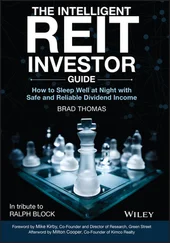One result particularly amazed the parents. After breakfast, Felix’s pulse and blood sugar levels rose – although not always to the same extent. It regularly went up Mondays to Fridays, with an upward outlier every Tuesday. On weekends his numbers remained lower, without Felix having had anything different to eat at breakfast. The explanation: The boy was feeling stressed. He had just started attending a new preschool and was afraid of what awaited him every morning, especially the math lessons on Tuesdays.
Vivienne Ming took her findings to the doctors. Her son’s insulin requirements, as the analysis clearly showed, fluctuated greatly. They were so dependent on factors such as the day’s lesson plan that it was impossible to give him the same amount of insulin day in and day out, calculated from the average of 21 random measurements.
The doctors, however, insisted on using the conventional method. They ignored the tables with hundreds of thousands of data points. Instead, they wanted to treat the child, who had been assessed in minute detail, just based on their own crude average data. Ming decided to ignore the physicians. She rejected the recommended standard procedure in favor of her own expertise, saying: “We have enough data and algorithms that we don’t have to deal with the average.” 3
Felix got an insulin pump that is connected to the Internet and that his mother can use remotely to inject the right dose before his blood sugar spikes or crashes. Tuesday mornings before the math lesson the dose is a bit higher, on weekends a bit lower. Today, Felix is a bright, cheerful child who does not have to do without anything except excess amounts of sweets. However, even if he gets ahold of a bar of chocolate, overriding the programmed amount of insulin, the algorithm quickly notices and alerts his parents, who can make an adjustment if necessary.
After Vivienne Ming was able to demonstrate how well her son is doing with his personalized therapy and the quality of life he gained from the algorithm she developed, she began to share her findings with academics and pharmaceutical companies. In fact, pharma giant Eli Lilly has now announced a fully automated pump that records and evaluates health data so it can inject the correct amount of insulin. Ming is pleased to have started the ball rolling, but at the same time she is disappointed at the pace at which medical science has embraced algorithmic innovations. “It is amazing how slow progress is,” she says. “It took only one month to personalize Felix’s diabetes therapy. But it has taken ten years to make that kind of treatment available more broadly. I don’t want to substitute doctors. I just want to make them smarter.” 4
Math does not have to horrify
Homogeneity is an illusion – in the treatment of diabetes and in learning. That is something Elke Stuthmann knows well. 5She also knows that the subject she teaches has divided generations of pupils. Some love mathematics, others – like Felix – hate it. In the end, both groups usually end up unhappy: During the classic math lesson, the whizzes are bored, while the less gifted fight desperately to make sense of it all or have long since switched off. “Learning in lockstep, in my opinion that’s not how it should be in the classroom,” Stuthmann says. It was an insight she gained as a young teacher. 6That is why the 58-year-old has never simply stood at the blackboard, explained the subject matter and hoped that everyone would somehow understand it. Yet her ideal solution, creating an individual curriculum for each student, has proven overwhelming.
She is now closer to achieving her goal, thanks to the help algorithms can provide. When Stuthmann leads her class into the computer room at Hamburg’s Friedrich Ebert Secondary School, the 27 students are confronted with different tasks. The math aces warm up with two introductory questions and then jump directly to much trickier problems. Weaker students can stick with the basics, gaining more time to review and understand. Everyone learns at their own pace. Stuthmann follows the progress of each student on her screen. If she sees that someone is struggling with a task and is not getting anywhere, she goes and helps. The rest of the class is not held up by this intervention; everyone stays busy because the computer constantly provides them with new assignments appropriate to their level.
Bettermarks , a computer program made by a Berlin start-up of the same name, is what makes this personalized teaching possible. 7It works like an interactive math book. The software explains topics, shows sample calculations and assigns problem sets – the traditional approach, as in printed textbooks. What is new is that each student is guided through the problem set along a personal learning path. An algorithm selects the exercise that fits best from a database of more than 100,000. If the student solves the problem easily and quickly, the level of difficulty goes up. If they get stuck or select a wrong answer, the system analyses the knowledge that is lacking. “Students receive feedback at each step along the way and, if they make mistakes, they are offered a series of exercises that deepens the knowledge required,” says Arndt Kwiatkowski, founder and managing director of Bettermarks . 8The student no longer has to adapt to the textbook, since the program adapts to the student.
Elke Stuthmann and her students do not go to the computer room for every math lesson. She only uses Bettermarks in class every other week, but she assigns it regularly for homework. She also selects the exercises herself with a mouse click, not leaving it entirely to the algorithm. But even these first steps towards personalizing teaching are having an effect. According to Stuthmann, the high-flyers are two to three times faster than their classmates – and grateful not to have to wait. Instead, they can work on more demanding tasks or even jump to the next lesson. Yet the weaker students also benefit. “They feel less alone, especially when doing their homework,” she says. “The software gives them tips and as much help as they need.” 9
If many students are unable to complete a certain exercise, the teacher can respond by repeating the material in class. Stuthmann firmly believes that the computer program increases the students’ motivation to learn. It even lessens the anxiety of doing math because students succeed more often and feel like their achievement is recognized. This is what Bettermarks hopes to achieve. It regards difference as normal, not as a problem. The company’s software is designed to avoid both under- and over-challenging the students and thus boring or stressing them. Bettermarks is now available in every classroom in Uruguay; in Germany in can be found in just a few hundred schools.
Educational systems like the one in Germany, however, would be well advised to abandon the illusion of homogeneity. People are different and they learn differently, too. Even if everyone had to achieve the same goal, their path, style and pace to get there would be very different. Schools too rarely take this into account and often still focus on the average learner. “You’re 12, it’s autumn, so it’s time to do fractions,” says journalist Jürgen Schaefer. 10
In fact, the achievement range in mathematics for 15-year-olds spans several years, even at Germany’s more challenging secondary schools. Nevertheless, individual support and personalized learning plans are still rare. The result is that many students hate math. Whether fractions, algebra or calculus – once you have missed the boat, you rarely catch up again. Traditional teaching can hardly make up for this: Repeating the material until everyone has understood it would not serve the best students in the class; simply continuing on would leave too many behind. Teachers like Elke Stuthmann want to solve this problem and support each of their students individually by providing digital support. Even then, not everyone will love mathematics, but at least it will prevent a lot of frustration and many hours of expensive after-school tutoring.
Читать дальше












